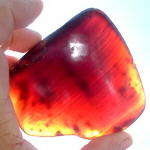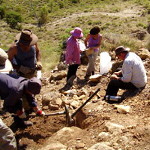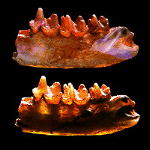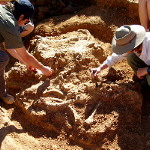 Fossil bilby teeth (credit: K. Travouillon). |
Palaeontologists unearth rare 15-million-year-old bilby21 March 2014 An ancient fossil of the bilby, Australia’s answer to the Easter rabbit, has been discovered at the Riversleigh World Heritage site in north west Queensland. The 15-million-year-old fossil of the long-eared marsupial, found by palaeontologists from The University of Queensland and the University of New South Wales, confirms that bilbies evolved millions of years earlier than was previously known. Lead researcher Dr Kenny Travouillon, from UQ’s School of Earth Sciences, said the finding would increase understanding of the fossil record and the evolution of Australian marsupials. DNA studies on related species had predicted that the bilby had evolved about 25 million years ago, when it separated from its closest relative, the bandicoot. Riversleigh is famous for previous discoveries of extinct Australian animal fossils, such as carnivorous kangaroos, the predecessors of Tasmanian tigers, and tree-climbing crocodiles. Dr Travouillon and his team, also recovered fossils of a 15-million-year-old species related to modern bandicoots from the same area. “Just like the bilbies, the previously oldest known ancestor of the modern bandicoots was also about five million years old, and hence this finding also pushes back their age,” Dr Travouillon said. As the new bandicoot species was found in an unusual time period -- almost crashing in a time period where it was least expected -- the team has named it ‘Crash bandicoot’, after a video game character. The fossils were discovered several years ago, and the results of subsequent research has now been published in the Journal of Vertebrate Paleontology. Source: University of Queensland news. |
Latest news
|








